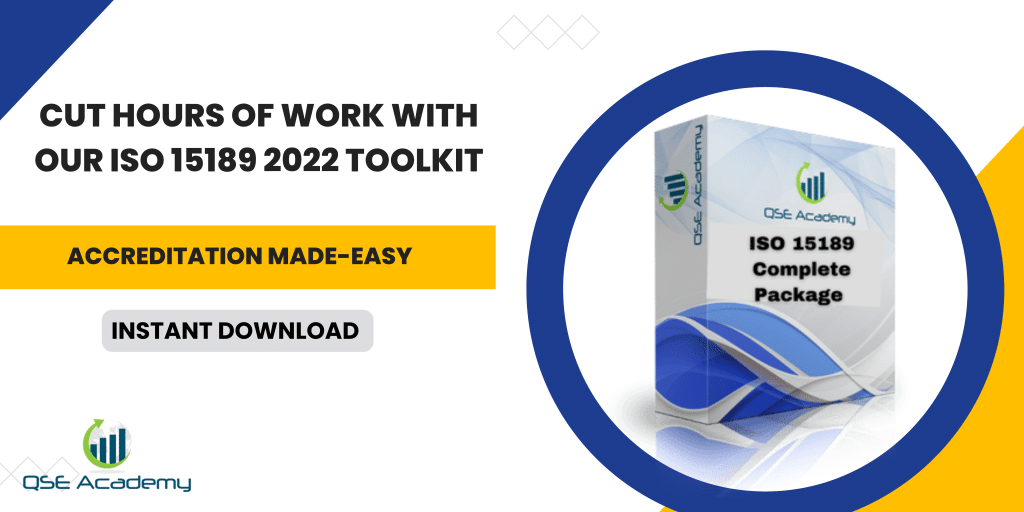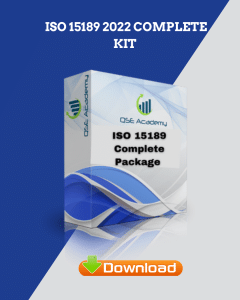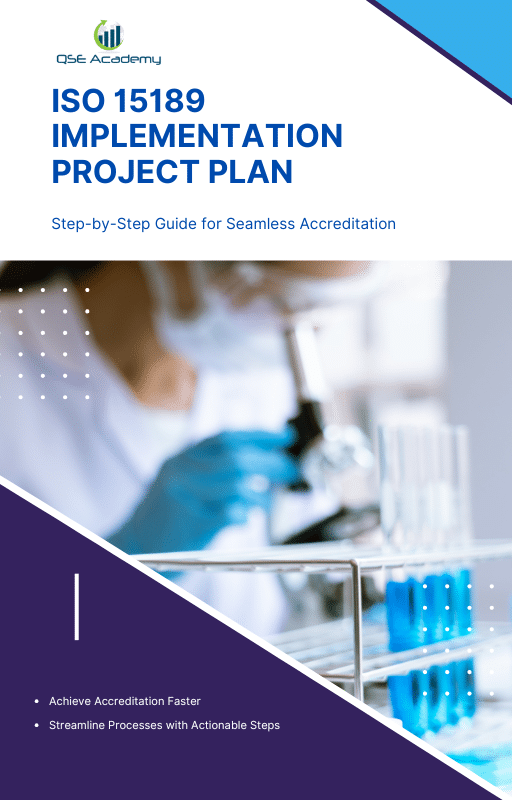ISO 15189:2022 vs CLIA ’88 – Which One Applies to You?
Last Updated on October 22, 2025 by Hafsa J.
Understanding Two Pillars of Medical Laboratory Quality
If you run a medical laboratory in the U.S. or plan to serve American clients, you’ve probably asked this before:
“Do we need CLIA certification, ISO 15189 accreditation, or both?”
It’s one of the most common—and confusing—questions I hear from lab directors.
Here’s the truth: both frameworks aim for quality, accuracy, and patient safety, but they come from two very different worlds.
-
CLIA ’88 (the Clinical Laboratory Improvement Amendments of 1988) is U.S. federal law—it’s mandatory for any lab testing human specimens for diagnosis, prevention, or treatment.
-
ISO 15189:2022 is an international standard—voluntary, but globally recognized for demonstrating competence and reliability in medical testing.
In my experience, most labs don’t struggle with meeting requirements—they struggle with understanding which ones apply to them. That’s what this guide is for.
You’ll learn:
-
The key differences between CLIA and ISO 15189.
-
How each one affects accreditation, oversight, and global recognition.
-
And most importantly, how to decide which framework fits your lab’s purpose and future plans.
By the end, you’ll know exactly where your lab stands—and how to stay compliant without doubling your workload.
Regulatory Nature & Scope – International Standard vs. U.S. Law
Let’s start with the foundation—what these two systems actually are.
CLIA ’88, short for Clinical Laboratory Improvement Amendments of 1988, is a U.S. federal law. If your lab performs tests on human specimens for diagnosis, prevention, or treatment within the United States, you are legally required to comply. There’s no choice here—it’s mandatory.
ISO 15189:2022, on the other hand, is an international standard developed by the International Organization for Standardization (ISO). It’s voluntary but recognized globally as the gold standard for medical laboratory competence and quality management.
So, think of it this way:
-
CLIA ’88 = regulatory license to legally operate a clinical lab in the U.S.
-
ISO 15189 = internationally recognized accreditation for medical quality and competence.
Here’s what I tell clients in the U.S.:
If you bill Medicare or Medicaid, you must comply with CLIA.
If you serve global clients, participate in international clinical studies, or simply want to prove your lab’s technical excellence, ISO 15189 gives you that edge.
Pro Tip:
You don’t have to choose one over the other. Some of the most respected labs maintain CLIA certification for U.S. compliance and ISO 15189 accreditation for global credibility.
Common Mistake:
Assuming CLIA certification automatically equals ISO 15189 accreditation. It doesn’t—CLIA is a legal baseline, while ISO 15189 measures system maturity and continual improvement.
Now that we’ve clarified their scope, let’s talk about who enforces and accredits these standards.
Oversight & Accreditation Bodies – CMS, CAP, and ILAC
Once you understand the scope, the next question is “Who’s actually in charge of each system?”
For CLIA ’88, the main authority is the Centers for Medicare & Medicaid Services (CMS). CMS enforces the law, issues certificates, and conducts inspections. However, CMS also approves private organizations—called “deemed agencies”—to inspect labs on its behalf. The most common ones are:
-
CAP (College of American Pathologists)
-
The Joint Commission
-
COLA
So if you’re a CLIA lab accredited by CAP, it means CAP is authorized by CMS to evaluate you—but you’re still under the umbrella of U.S. federal law.
For ISO 15189, there’s no single global regulator. Instead, labs are accredited by national accreditation bodies that follow international guidelines from ILAC (International Laboratory Accreditation Cooperation).
Examples include:
-
A2LA (USA)
-
UKAS (United Kingdom)
-
NATA (Australia)
-
DAkkS (Germany)
These bodies assess labs for compliance with ISO 15189 and issue internationally recognized certificates under ILAC’s Mutual Recognition Arrangement (MRA).
Here’s the key difference I emphasize with clients:
-
CLIA = Legal License. You can’t operate without it in the U.S.
-
ISO 15189 = Quality Credential. It proves your lab’s competence on a global scale.
Pro Tip:
If your lab plans to join international clinical trials or partner with research organizations abroad, ISO 15189 adds instant credibility. CLIA alone won’t carry that recognition outside the U.S.
Pitfall to Avoid:
Confusing CLIA certification with international accreditation. CLIA ensures compliance with U.S. law; ISO 15189 demonstrates global competence and continuous improvement.
Now that you know who governs each system, let’s look at how their actual requirements compare—side by side.
Core Requirements Compared – Quality, Competence, and Risk
Now let’s get into the heart of it — how the two frameworks actually operate inside your lab.
Both CLIA ’88 and ISO 15189 aim to ensure reliable, accurate, and safe laboratory testing. But their approaches couldn’t be more different.
Here’s a quick snapshot before we unpack it:
| Category | ISO 15189:2022 | CLIA ’88 |
|---|---|---|
| Type | International Standard | U.S. Federal Law |
| Focus | Competence, ethics, quality management, risk | Regulatory compliance and test accuracy |
| Structure | 8 Clauses (process-based) | Subparts (§493) by topic (personnel, QC, proficiency, etc.) |
| Audits | Accreditation assessments by ILAC bodies | CMS or agency inspections |
| Improvement | Mandatory continual improvement | Not required — focuses on compliance |
ISO 15189 is built around a risk-based, process-driven system. It looks at everything from leadership commitment to continual improvement, data security, and patient safety. It’s proactive — it expects you to anticipate errors before they happen.
CLIA ’88, in contrast, is rule-based. It sets minimum legal standards for personnel, quality control, test validation, and proficiency testing. It’s more about ensuring that every lab meets the same baseline of quality to protect patients nationwide.
Here’s how I often explain it to clients:
CLIA makes sure you’re following the rules.
ISO 15189 makes sure you’re improving how you follow them.
Example:
Under CLIA, you must perform quality control checks for each test method.
Under ISO 15189, you must also evaluate risks, document root causes, and use findings to improve processes—not just pass inspection.
Pro Tip:
If you already meet CLIA, you’re halfway to ISO 15189. The next step is building a Quality Management System (QMS) that captures continuous improvement and risk awareness.
Now that we’ve compared the system requirements, let’s look at a crucial area that often confuses labs — personnel and competence.
Personnel & Competence Requirements – Licensing vs. Competency
If there’s one area that highlights the difference between CLIA and ISO 15189, it’s how they define qualified personnel.
Under CLIA ’88, roles are very specific and legally defined. Every lab must have:
-
A Laboratory Director
-
Technical Supervisors
-
Clinical Consultants
-
Testing Personnel
Each role has strict education, training, and licensure requirements that depend on the complexity of testing—waived, moderate, or high complexity. In short, CLIA is about minimum qualifications. If you meet them, you’re legally cleared to perform testing.
ISO 15189 takes a different approach. Instead of titles, it focuses on competence—the combination of knowledge, skills, and consistent performance. It doesn’t specify degrees or licenses; it expects the lab to define, document, and verify that each person is competent for their assigned tasks.
In my experience, this is where CLIA labs often fall short when transitioning to ISO 15189. They have licensed staff but no documented evidence of ongoing competence—no practical assessments, peer evaluations, or continuous training logs.
Example:
A technologist may meet CLIA’s education and licensing requirements but fail ISO 15189 if there’s no proof they’ve been evaluated for continued competence on new analyzers or updated test methods.
Pro Tip:
Combine both systems:
-
Use CLIA’s defined structure to meet regulatory expectations.
-
Use ISO 15189’s competence framework to ensure performance, confidence, and audit readiness.
Pitfall to Avoid:
Relying only on job titles or résumés to prove qualification. ISO 15189 expects evidence of competence maintenance—training records, observation checklists, and periodic reviews.
Once you’ve built a competent team, the next question is: how do you manage quality and documentation?
Quality Management & Documentation – Compliance vs. Continual Improvement
Both CLIA and ISO 15189 demand that your lab runs smoothly and consistently — but they differ in why and how they expect you to prove it.
Under CLIA ’88, documentation is about compliance. You must have written procedures for every test, follow them precisely, and keep records ready for inspection. It’s about demonstrating that your lab meets the minimum legal requirements — QC logs, instrument maintenance, proficiency testing, and personnel files.
Under ISO 15189:2022, documentation goes beyond compliance. It’s part of a Quality Management System (QMS) designed to ensure risk awareness, continual improvement, and patient safety.
Instead of just keeping records, ISO 15189 expects you to use those records to analyze trends, identify issues, and improve performance.
Here’s how it plays out in practice:
-
CLIA might ask, “Do you have a written QC procedure?”
-
ISO 15189 asks, “How do you monitor QC data to prevent future errors?”
One of my clients once told me, “CLIA checks if you have a seatbelt on. ISO 15189 checks if you know why you’re wearing it and whether it still works.” That sums it up perfectly.
Pro Tip:
If your lab already complies with CLIA, you can build ISO 15189 elements around it—for instance:
-
Add risk-based thinking to your incident reporting.
-
Turn your QC reviews into CAPA (Corrective and Preventive Action) discussions.
-
Track continual improvement metrics such as turnaround time, sample rejection rates, or corrective action closure times.
Common Mistake:
Treating documentation as a burden instead of a management tool. ISO 15189 auditors look for evidence of leadership engagement and data-driven decisions, not just filled-out forms.
Now that your QMS is taking shape, let’s look at what these two frameworks mean for your lab’s recognition and global reach.
Recognition & Global Applicability – Local License vs. Global Passport
Here’s where CLIA and ISO 15189 really separate — how far their recognition travels.
CLIA ’88 is a U.S. federal law, and its certification is valid only within the United States. It’s your ticket to legally operate a clinical laboratory that tests human specimens for medical purposes. But once you step outside U.S. borders, CLIA holds little to no international weight.
ISO 15189:2022, on the other hand, is your global passport. It’s recognized by regulators, accreditation bodies, and health systems worldwide through ILAC’s Mutual Recognition Arrangement (MRA).
If your lab is ISO 15189 accredited, that certificate tells international partners, sponsors, and clients one thing clearly:
“This laboratory meets global standards of medical competence and quality.”
Here’s a real-world scenario:
A reference lab in California handles both domestic patient samples and international clinical trial work. Their CLIA certification satisfies U.S. requirements, while their ISO 15189 accreditation gives them credibility with European and Asian sponsors who require ISO-recognized laboratories.
Pro Tip:
If your lab works with international clinical trials, global clients, or cross-border specimen transport, ISO 15189 gives you the recognition CLIA cannot. It can also help your lab win contracts that specify “ISO-accredited laboratories only.”
Pitfall to Avoid:
Assuming CLIA certification alone guarantees global acceptance. Even large U.S. labs sometimes lose opportunities abroad because international organizations only recognize ISO-based accreditations.
So, how do you know which one your lab really needs? Let’s break it down in a simple decision framework.
Which One Applies to You? – Decision Framework
So, which standard does your lab actually need—CLIA ’88, ISO 15189, or both?
It depends entirely on where you operate, who you serve, and what you test.
Here’s the simple way I explain it to clients:
| Your Lab Situation | Applies To You |
|---|---|
| You test human specimens in the U.S. for diagnosis or treatment | CLIA ’88 (Mandatory) |
| You serve international clients, global trials, or seek international credibility | ISO 15189 (Voluntary, but strategic) |
| You do both clinical and research testing across borders | Both (Best Practice) |
If you’re in the U.S.:
CLIA is non-negotiable. Without it, your lab can’t legally perform diagnostic testing.
If you’re outside the U.S.:
ISO 15189 is your benchmark for medical competence and global acceptance. Many countries model their national regulations around ISO 15189, so even if it’s not “the law,” it’s often the expected standard.
If you’re expanding internationally or partnering on clinical studies:
You’ll likely need both. CLIA keeps you compliant in the U.S., and ISO 15189 opens doors abroad.
Pro Tip:
Before committing, conduct a gap analysis between the two. You’ll find overlap in areas like quality control, document management, and internal audits—but ISO 15189 introduces deeper elements like risk-based thinking, ethics, and continual improvement.
Example:
A diagnostic lab in Texas added ISO 15189 accreditation to attract international research sponsors. Their CLIA certificate kept them compliant; ISO 15189 helped them secure high-profile contracts from European clinical trials.
Pitfall to Avoid:
Choosing one simply because it’s “easier.” CLIA is mandatory, but ISO 15189 can be your lab’s differentiator—especially in competitive healthcare or research markets.
Now that you know which one applies, let’s answer a few common questions labs usually have during this decision-making process.
FAQs – Common Questions About ISO 15189 & CLIA ’88
1. Is ISO 15189 recognized by CLIA or CMS?
Not officially. CLIA ’88 is a U.S. law regulated by CMS (Centers for Medicare & Medicaid Services). ISO 15189 is a voluntary international standard governed by national accreditation bodies under ILAC. Some U.S. organizations like CAP incorporate ISO 15189 principles into their inspections, but to operate legally in the U.S., you still need CLIA certification from CMS.
2. Can my lab have both ISO 15189 and CLIA accreditation?
Yes—and many top-tier labs do. CLIA compliance ensures you can legally perform diagnostic testing in the U.S., while ISO 15189 accreditation proves your lab meets global standards for quality and competence. It’s an ideal setup for labs that handle both domestic and international projects.
3. Which one is harder to maintain?
They challenge labs in different ways.
-
CLIA focuses on regulatory compliance—meeting fixed requirements, documentation, and periodic inspections.
-
ISO 15189 emphasizes continual improvement, risk management, and leadership engagement.
So while CLIA is more about passing inspections, ISO 15189 is about building a culture of quality that never stops evolving.
4. If I’m a U.S. lab, do I need ISO 15189?
You don’t need it legally—but it’s becoming increasingly valuable. Many hospitals, research sponsors, and international partners now prefer or even require ISO 15189-accredited labs for collaborations or data submissions.
Now that the main questions are cleared up, let’s wrap things up with key takeaways—and a clear next step for your compliance journey.
Choosing the Right Compliance Path
Both CLIA ’88 and ISO 15189:2022 are powerful frameworks—but they serve different purposes.
CLIA is your legal license to operate in the U.S. healthcare system. ISO 15189 is your global badge of excellence, showing the world your lab meets the highest standards of medical competence and patient safety.
In my experience, the smartest labs don’t treat them as competitors—they treat them as complements.
CLIA keeps you compliant. ISO 15189 pushes you to improve. Together, they create a system that’s both legally sound and internationally respected.
Here’s the key takeaway:
-
If you’re working only within the U.S., CLIA is non-negotiable.
-
If you’re looking beyond borders—or want to stand out for quality—ISO 15189 gives your lab a global edge.
-
And if you’re serious about long-term growth, adopting both creates the most robust and credible framework possible.
Pro Tip:
Start with a CLIA-ISO gap analysis. It’ll show you exactly where your lab meets the requirements and where to build in ISO’s risk-based, improvement-driven mindset.
Next Step:
If you’re ready to strengthen your lab’s compliance or plan a transition to ISO 15189, QSE Academy offers custom toolkits, templates, and training to make it practical and audit-ready—without starting from scratch.
Whether it’s ISO 9001, ISO 22000, or the cosmetics-focused ISO 22716, I’ve spent my career I’m not here to call myself an expert—I prefer “enthusiast” because I truly love what I do. When I’m not writing about standards, you’ll probably find me playing Piano 🎹, connecting with people, or diving into my next big project💫. I’m an engineer specialized in the food and agricultural industry
make ISO standards less intimidating and more approachable for everyone.
turning complex jargon into clear, actionable steps that businesses can actually use.
There’s something incredibly rewarding about helping people navigate food safety and quality management systems
in a way that feels simple, practical, and even enjoyable.
I have a Master’s in QHSE management and over 12 years of experience as a Quality Manager
I’ve helped more than 15 companies implement ISO 9001, ISO 22000, ISO 22716, GMP, and other standards
My clients include food producers, cosmetics manufacturers, laboratories, and service companies
I believe quality systems should be simple, useful, and efficient.













